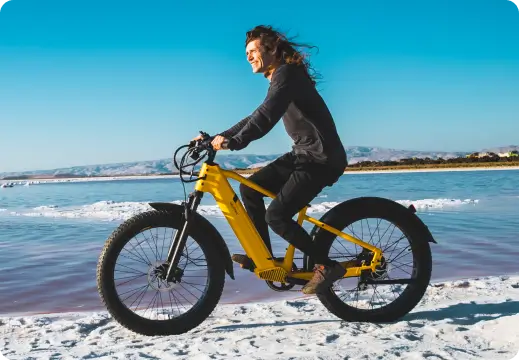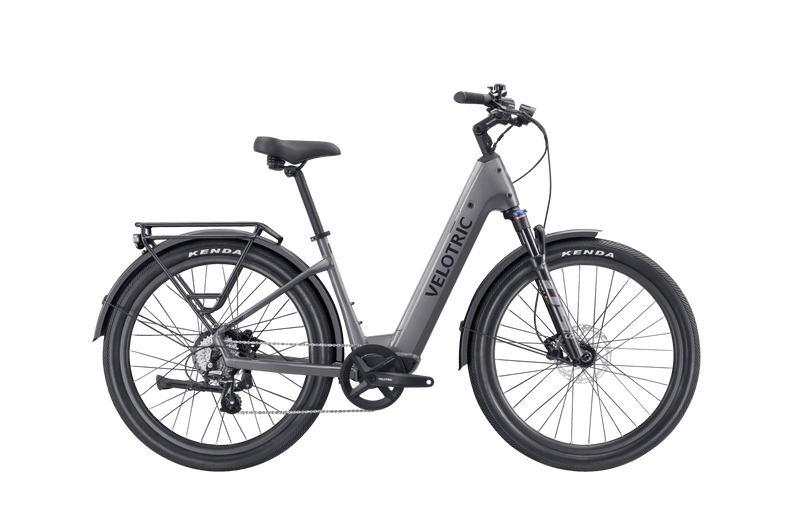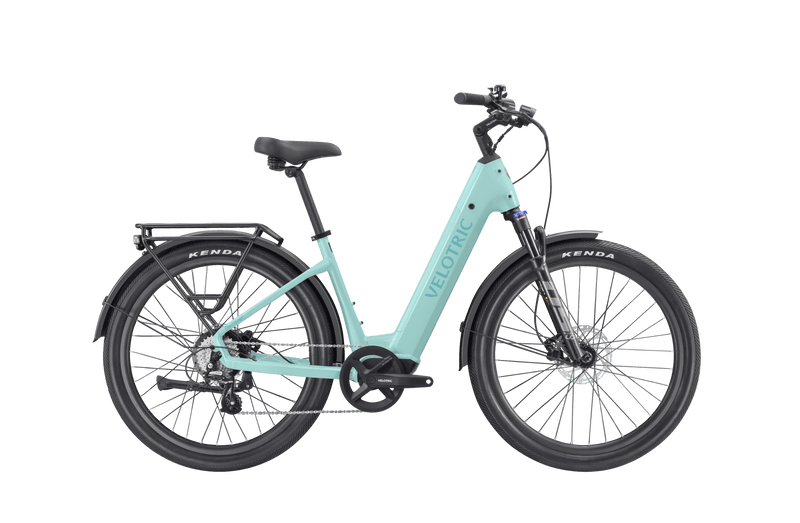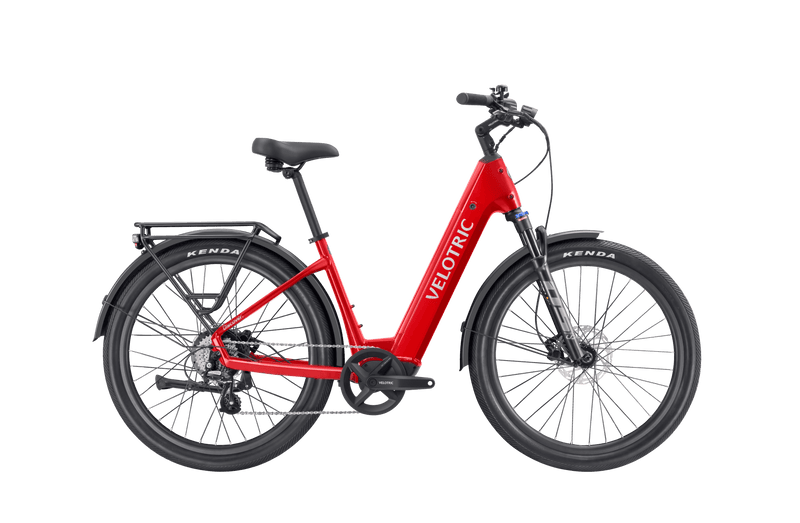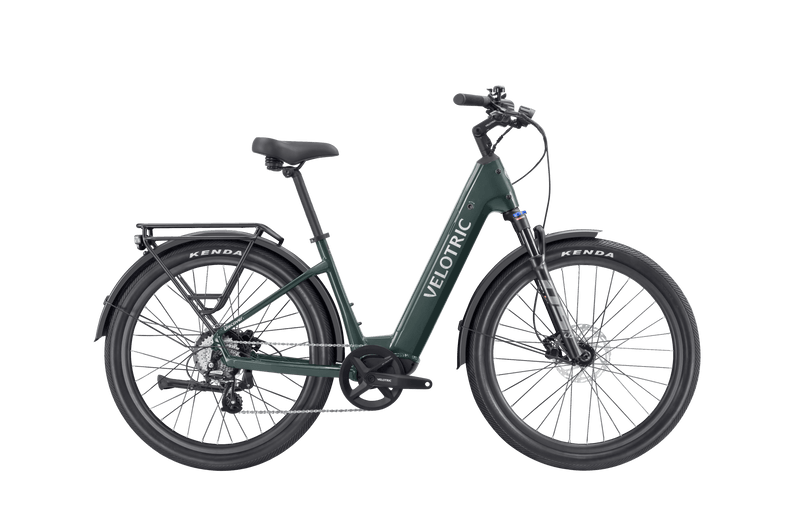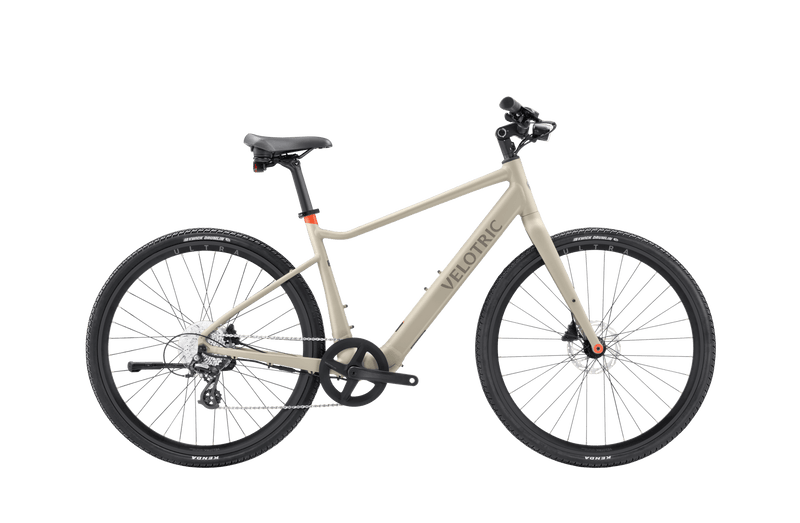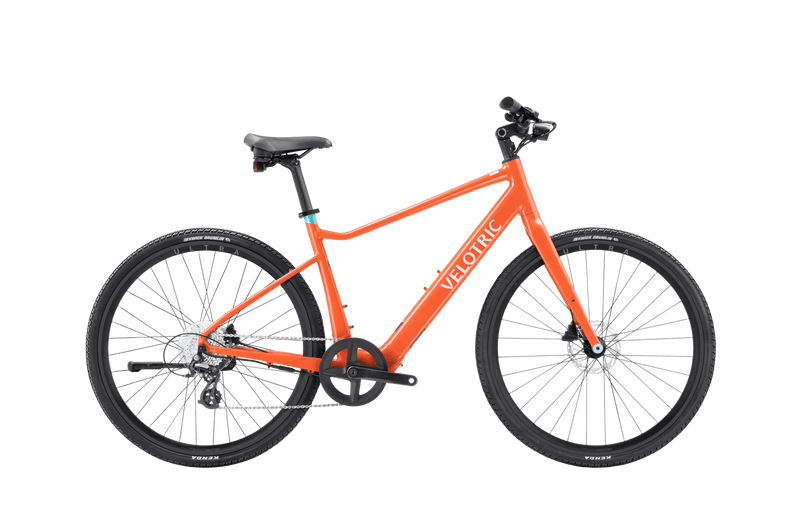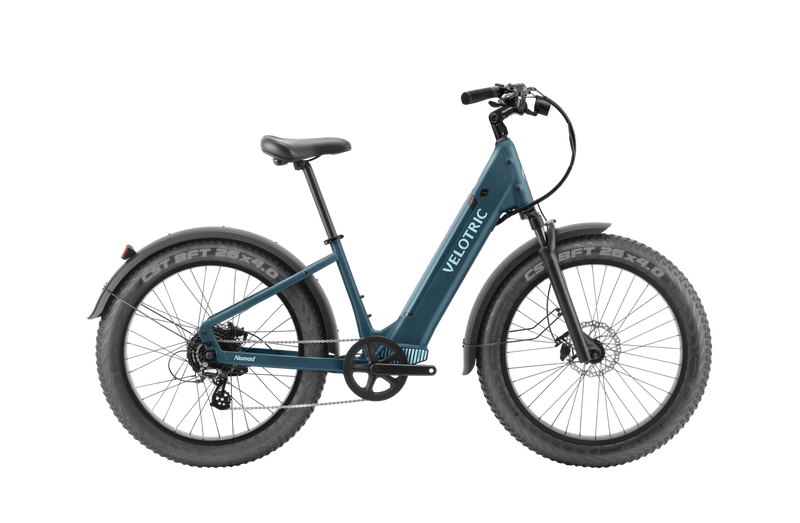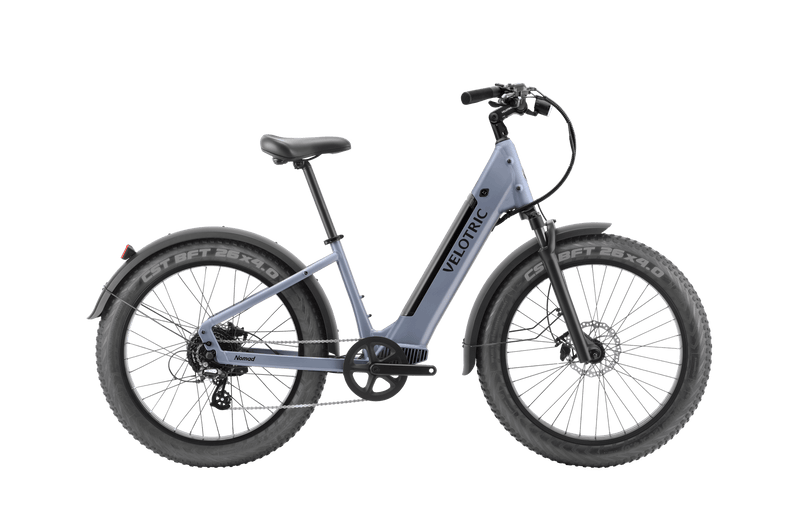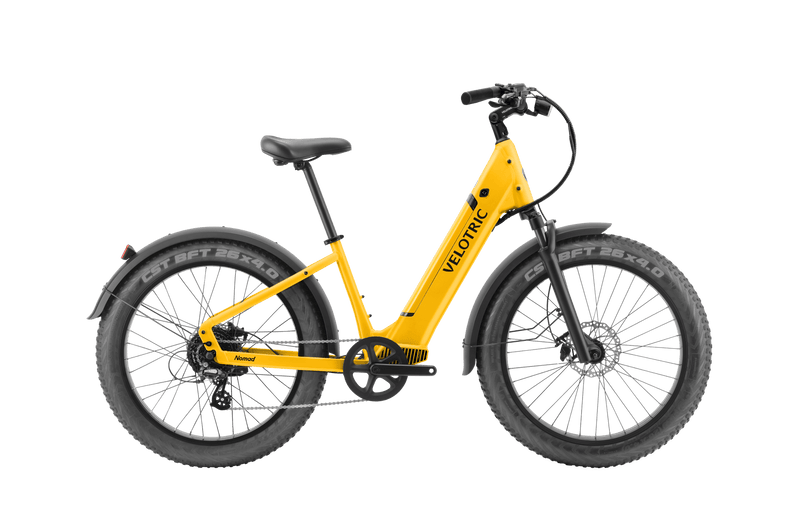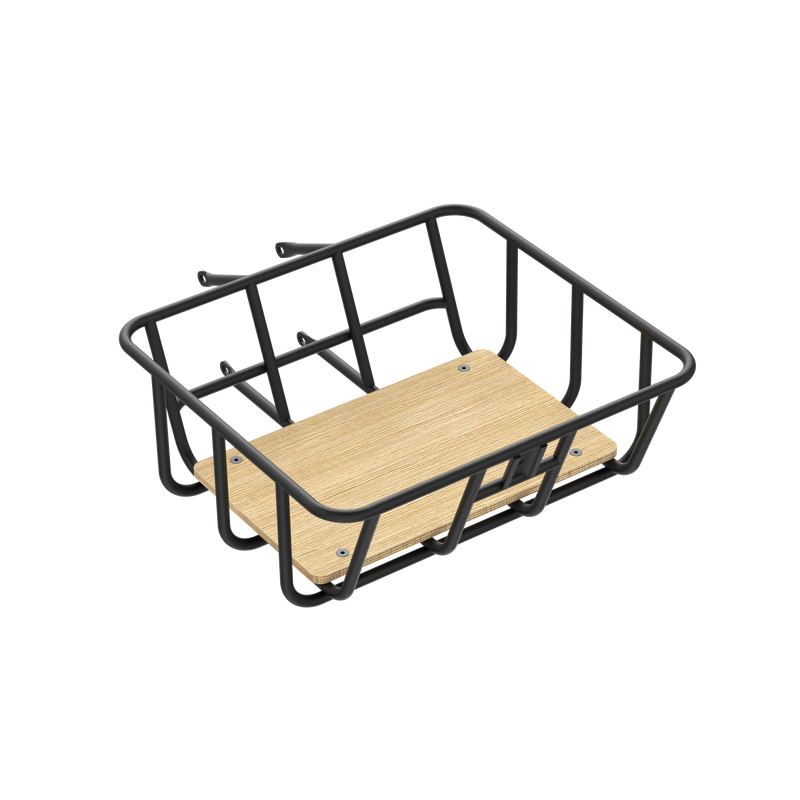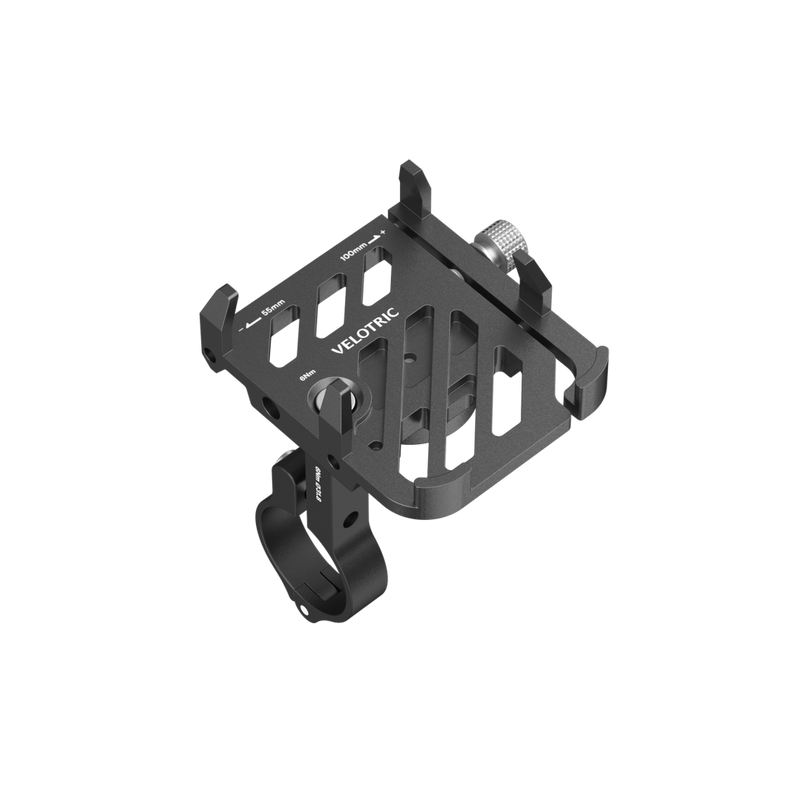Brakes are one of your bike’s most important safety features, allowing you to decelerate and make clean stops to avoid hitting cyclists, cars, pedestrians, or other obstacles.
You probably don’t give your brakes a lot of thought. We’re here to change that.
Understanding the different types of brake systems can help you make smart choices when purchasing an e-bike and ensure you know how to care for your brake system in the future.
Read on for a quick introduction to the two main types of bike brakes: mechanical disc brakes and hydraulic disc brakes.
What is a disc brake?
In the past, bikes were more frequently equipped with rim brakes. Rim brakes work by applying force directly to the rim of the bike wheel, causing it to come to a stop.
In contrast, disc brakes work by applying force to a rotor (or disc) mounted on the wheel’s hub. When you squeeze the brake levers on the bike’s handlebars to engage the brake, pistons push the brake pads into a disc to complete the braking process.
Disc brakes have gained popularity over rim brakes for a few reasons, including:
- Greater stopping power. Disc brakes have greater stopping power than rim brakes, making them ideal for steep descents and rapid deceleration. Disc brake rotors can even be customized to increase or decrease stopping power.
- Less force needed. While disc brakes have greater stopping power, they require the rider to apply less force to the lever (this is ideal for kids and older people). Plus, disc brakes offer superior modulation. You can feather the brakes, applying a hard, light, or middling force.
- More weather-compatible. Finally, disc brakes are better suited to all seasons. Rim brakes are exposed to the elements and can get slippery in rainy, snowy, or muddy conditions.
The two main types of disc brakes are mechanical and hydraulic. We break down the differences below.
Mechanical disc brakes
Mechanical disc brakes and hydraulic disc brakes both work by applying force to the rotor on the wheel’s hub. However, the parts used to transfer force to the rotor differ.
Mechanical disc brakes are cable-actuated. They rely on a complex set of steel cables to transfer force from the brake lever to the rotor.
Hydraulic disc brakes
Hydraulic disc brakes don’t have the steel cable system of a mechanical disc brake system. Instead, they consist of a sealed hydraulic fluid system — with a closed master cylinder and piston — used to transfer force from the brake lever to the rotor.
How they work
Mechanical disc brakes and hydraulic disc brakes both work by applying force to the rotor on the wheel’s hub. However, they differ in how that force is applied.
Basically, the difference is between the part where you squeeze the brake lever with your hand and the part where the force is applied to the disc.
Mechanical disc brakes
In a mechanical disc brake, steel cables transfer force from the lever and connect the brake lever at the handlebars to the brake caliper.
Squeezing the lever applies force to the cable and the pistons inside the brake caliper.
The brake caliper applies pressure to the brake pads, which push onto the disc rotor to slow and stop the wheel.
Hydraulic disc brakes
A hydraulic braking system consists of a cylinder that holds braking fluid and a piston.
When you squeeze the brake lever with your hand, the piston moves inside the cylinder and forces brake fluid toward the brake caliper.
The brake caliper then applies pressure to the brake pads, which push on the disc rotor and stop the wheel from turning.
Performance
In general, disc brakes offer better performance than rim brakes — we’ve detailed some of the reasons above.
But what about mechanical versus hydraulic disc brakes? The hydraulics come out on top in terms of braking performance.
Mechanical disc brakes
Mechanical disc brake systems are prone to wear and tear because of the friction placed on the steel cables that make up the braking system. The steel cables are also at greater risk of exposure, as grit can sneak in and interfere with the cables.
Hydraulic disc brakes
The main reason to choose hydraulic disc brakes is that they don’t rely on cables, which cause friction and interfere with the braking system’s efficiency.
They have better stopping power and can be modulated for more precise, controlled stops.
Hydraulic brakes have superior braking power because they typically move both brake pads, whereas mechanical disc brakes only push one brake pad.
Price
The brake system can impact the price tag of an e-bike. Here’s how.
Mechanical disc brakes
Mechanical disc brakes are generally more affordable than hydraulic disc brakes. They’re also cheaper to maintain (more on that below), which can save you additional money in the long term.
Hydraulic disc brakes
Hydraulic disc brakes (and the bikes equipped with them) are typically more expensive than mechanical disc brake models. Hydraulic disc brakes generally cost two to three times more than mechanical disc brakes.
Maintenance
Which brakes win when it comes to maintenance? There’s no doubt that mechanical disc brakes are cheaper and easier to maintain.
Mechanical disc brakes
Mechanical disc brakes are generally easier to fix. The most common issue is a worn, frayed, or broken brake cable that needs fixing (cables stretch, too).
You can even replace brake lines at home, meaning less maintenance costs.
Hydraulic disc brakes
Hydraulic disc brakes typically involve higher maintenance (and cost more to maintain) than mechanical disc brakes. The hydro fluid-filled system can only be fixed or adjusted by a professional with special tools and expertise.
Mechanical vs. Hydraulic disc brakes: A quick overview
Is your head spinning with brake-related info? Or maybe you skimmed the blog and ended up here — we won’t take offense!
Here’s a quick overview packed into one easy table.
| Mechanical | Hydraulic | |
| How the brake works | Steel cables | Sealed fluid system |
| Performance | Better than rim brakes but not as good as hydraulic disc brakes | Superior to rim brakes and mechanical disc brakes |
| Price | Less expensive | More expensive |
| Maintenance | Cheaper to maintain | More costly to maintain |
How to choose the right type of disc brake for you
So, which disc brake is right for you? There’s no right answer to the hydraulic vs. mechanical brake debate. It ultimately depends on your personal needs and preferences, including:
- Why you cycle. Are you looking to cycle for fun? To get to and from work? For exercise? If you just need a bike for everyday purposes, mechanical disc brakes are sufficient. If you want to take up road bike racing or mountain biking, you might prefer a higher-caliber bike with hydraulic disc brakes.
- Your riding style. Avid cyclists who like fast starts and stops may prefer hydraulic disc brakes, which offer more control. If you’re less concerned with braking precision and don’t reach high speeds on your bike, this is less of an issue.
- Your budget. Hydraulic disc brakes are higher performance — but they also have a high-end price tag. Skip the hydraulic disc brakes if you’re strapped for cash — they can cost up to three times as much as mechanical disc brake systems. Also, consider the cost of maintenance and spare parts.
Finally, it’s worth mentioning safety. Both mechanical disc brakes and hydraulic disc brakes will stop your bike when you need it to stop. However, the added braking force and precision offered by hydraulic disc brakes provide an extra level of protection — which means extra peace of mind.
Discover the best Velotric e-bike options for you
Velotric doesn’t skimp on brakes. Our e-bikes are equipped with Shimano hydraulic disc brakes, assuring your safety and comfort — whether you’re commuting to work or breaking a sweat on your bike.
For everyday cycling, trust the Discover 1. If you want something to go off-road, try the Nomad 1 fat tire bike. With either bike, you can choose from a high-step or step-through model — learn about the pros and cons of each bike frame type.
Ready to try a Velotric bike for yourself? Find a bike shop near you for a test ride.






































